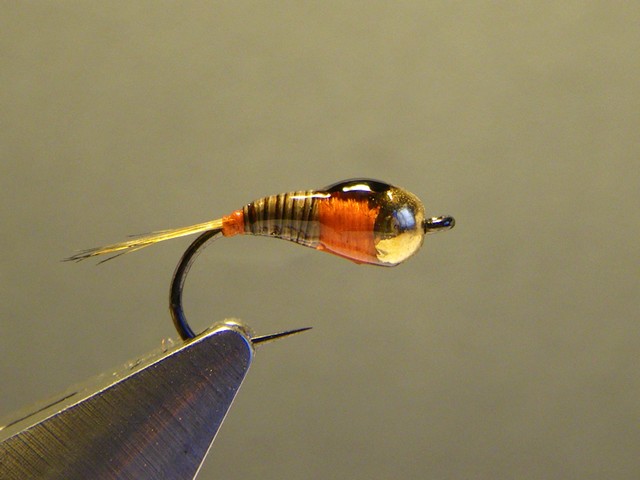 |
| (FlyGuys.com) |
Perdigón flies seem interesting.
I first heard about them from competition fly fishermen. As I’ve written before, I think there’s much to be learned from people who compete and try to catch the most fish and the biggest fish (video here).
A Perdigón fly hails from anglers in Europe, and it often is used by tightline (or Euro-nymphing) anglers. They’re designed to sink quickly into the strike zone. And, they’re very durable.
So, I’ve been making some, and I’m finding that they’re super-easy to tie. A tail, a thread body, wire for segmentation (or, not), and a thread hot spot collar.
Then, you put on some epoxy to fill out and harden the fly. It also gives a nice glow to everything. I use Loon UV Finish, the thick kind. I put on the goop, smoothen it with a bodkin, and hit it all with a UV flashlight. Last, add a dot from a Sharpie pen to denote a wing case. Easy.
I’ll let you know how it goes when I fish them this autumn.
Discover more from BlogFlyFish.com
Subscribe to get the latest posts to your email.

They do work very well at least in the spring. Does the Loon UV dry sticky or with a hard finish?
Hard finish. It becomes like glass. Pretty cool.
Last few times on the swift fishing these euro style has worked nicely for me – small ones – 16, 18, 20, 22. Orange, and black/pearl.
Interesting! I've not nymphed at the Swift in a while but have found in the past that really plain ones work better for me. And, to your point, sizes 20 and smaller.
What I find interesting is that the black spot (wing case) would end up on the bottom of the fly when using jig style hooks. Maybe it just serves as a big color contrast??
True. I think color contrast is a huge strike trigger, as bugs tend to have darker thoraxes and lighter bellies.
Also, I read in an article that the wing case ridding on the bottom of of a jig-style hook shouldn't matter much. The flies in swift current are getting tossed around anyways, the author asserted.
Also, I just noticed that the flies in the above photo are tied on regular hooks, not the jig-style ones. So, the wing case would be riding on top.
When I tie these flies on the competition-style jig hooks, I just put the Sharpie dot on the the side where the hook point is; so, theoretically, those wing cases would be riding up top, too.